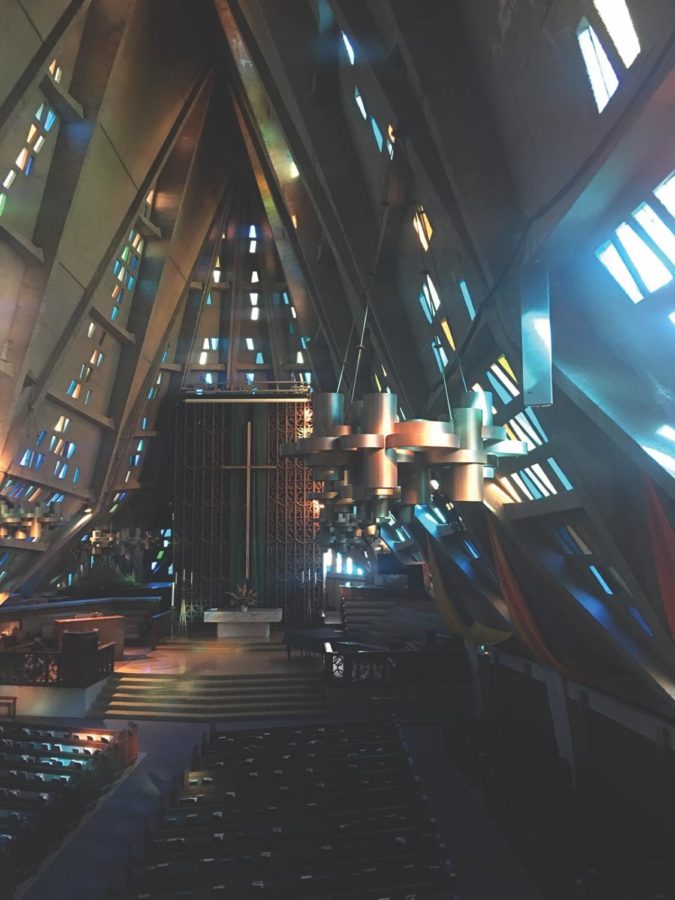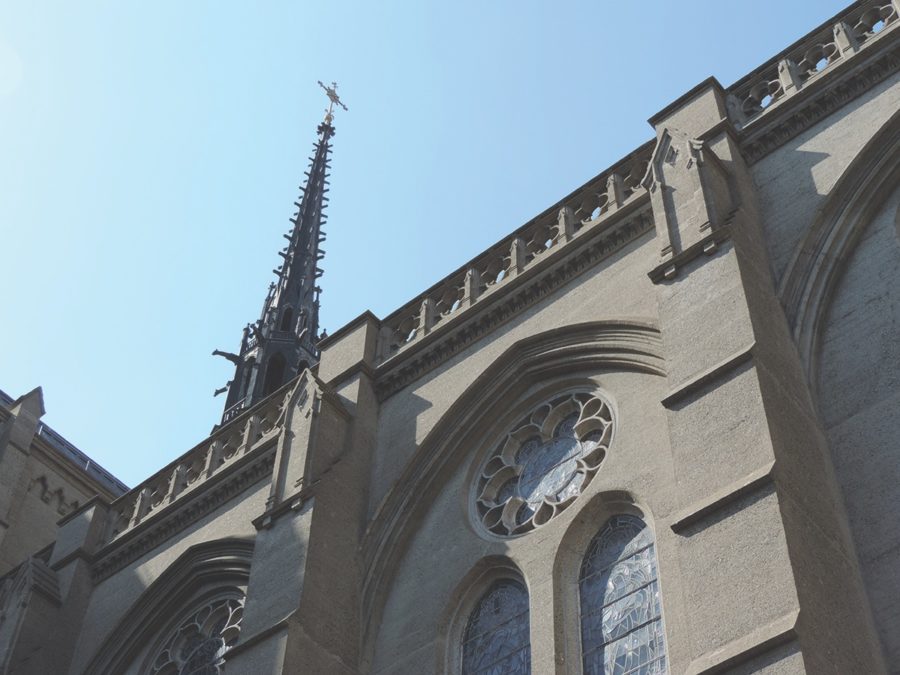Sacred Spaces
2 MIN READAn examination of the evolution of religious structures and the architectural styles associated with them.

Space, lines, light and sound are components that are essential to the experience of architecture; the most profound buildings capture these details through thoughtfully orchestrated design. In recent eras, the architects behind religious structures have been driven to imitate the concepts found in modern architectural styles and incorporate it into their own. Modern-day architecture is characterized as a combination of postmodern, futuristic, and minimalistic styles that serve to demonstrate the adaptation of architectural styles to the modern day. Additionally, technology is becoming a more important element of architecture for many places of worship as demonstrated in many new structures that are now equipped with lighting, audio, and video systems.
The stage, elevated above the ground and surrounded with moving lights, as well as LED lighting fixtures, resembles a setup similar to a concert performance. These are some of the structural elements are found at the VIVE Church in Palo Alto. As one enters into the sanctuary, they are exposed to the massive space, surrounded by symmetrical sound absorbing wall panels, brushed in a light-colored birch, along with the stage lights, they serve to create a warm and bright atmosphere. The enormous projection screen on stage captivates the room, establishing an atmosphere that is engaging yet still allows for contemplation, reflection, and meditation. Anyone who steps into this space will feel the intensity of the stage presence even with the minimalist design that it has.

Stepping through the doors of Grace Cathedral, located upon a hill in San Francisco, the sprawling pews and the colorful streaks of light that fall from the intricate glass windows prove to be incredibly captivating. The placidness of the cavernous space, generally filled with inquisitive tourists or worshippers, juxtaposes the bustling street that is found outside the thick doors. Those who decide to explore these serene spaces become enthralled by the natural beauty that can be found in this man made structure. Anyone can experience this feeling of enchantment, no matter how much they know about the religion or the history behind the ancient forms of architecture.
Whether looking at a classical cathedral or a sleek, modern mosque, art history critics and public viewers alike can agree on one thing; the development of the forms of religious architecture throughout various eras is a process that is breathtaking in itself. More advanced viewers might be able to better identify the towering steeple of a Protestant church or the monumental ark levitating over the interior of a synagogue, but all who observe religious architecture can revel in the beauty of these structures and the themes that they represent. Although the constant advancements and evolutions of religious structures may seem like complete shifts in their designs, every new aspect serves the same purpose of enhancing the audience’s visceral experience.







